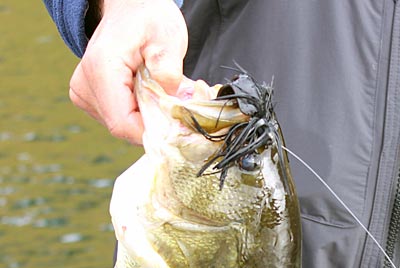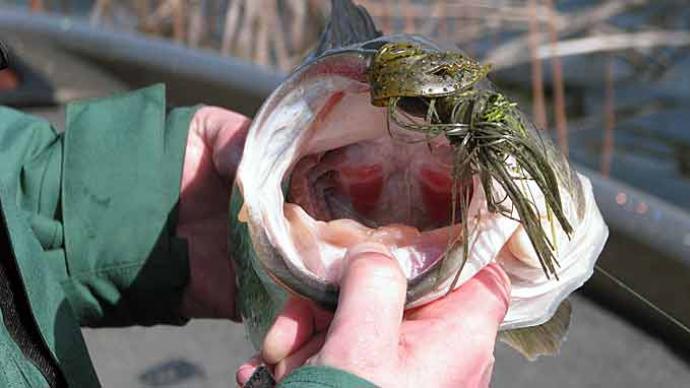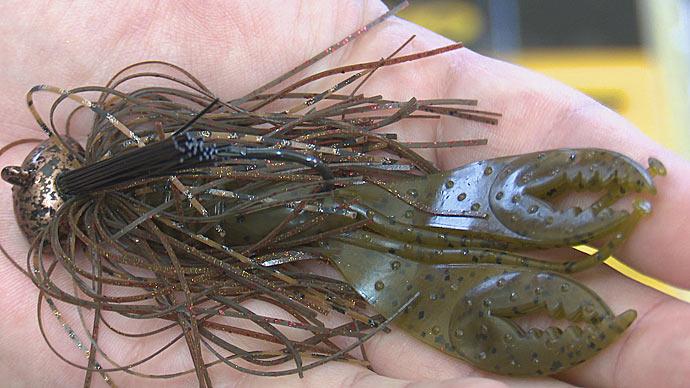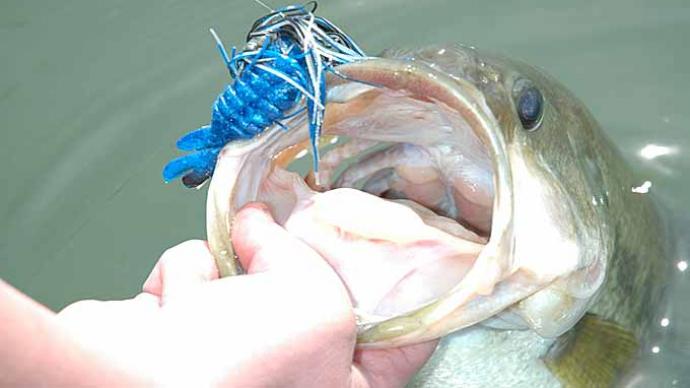
Jigs come in all sorts of shapes, colors, sizes, and even skirt materials. There are a bunch of different ways to fish them as well. However, to catch bass when the fishing is tough, you have to be very versatile. In this article, I will go through different ways of fishing jigs and acquaint you with this wonderful lure called a jig.
Let me first give you a little bit of background about jigs. Jigs are made with many different kinds of materials. To name a few: hair, tinsel, and silicone. However, we will mostly be talking about silicone jigs. Silicone jigs are much easier to fish. When they get wet, they become "waterproof," making them easier to slide through thick vegetation. Some people use scent to help aid the jig going through the thick milfoil.
Jigs come in many different shapes and sizes. They even come with different shaped heads for different types of applications. They come made with a flipping, swimming, and even a stand-up type head. They also come in an array of different weight heads.
Jigs even come in countless colors and even different shades. It is best that when you first start out fishing a jig, you should stick to primary colors. Some of these colors would include brown and orange, moss green, and even black and blue.
When selecting a jig by its size, you want to use the lightest weight possible. Using less weight will give the jig a more realistic action and presentation. You also need less weight because bass will typically hit the jig when it is on the fall, and using less weight will help the jig fall slower.
While talking about fall rate, let's talk a little about jig trailers. Plastic trailers work great for warm water. Jigs with pork are deadly when the water temperature drops below 60. When you pick a trailer, you should keep in mind to match the trailer color to the color of the jig skirt.
Now let's get into how to fish a jig. There are many different ways to fish them. One of the more popular ways to fish them is to do a hop and swim type retrieve. Make a long cast, and then let the jig rest on the bottom for a few seconds. Then slowly lift your rod tip and let the jig fall back to the bottom. After a few hops, you swim the jig a few feet, then begin to hop the jig again. This hop and swim method has produced dramatically for many people throughout the country.
Another way to fish a jig is to hop the jig on the bottom or even drag it. However, one of the deadliest ways to fish a jig is to swim it close to the bottom or above a weed line.
A 7-foot heavy-action rod will give the jig enough action to entice big bass. Pick a rod with a soft tip and enough backbone to horse the big boys out of the thick stuff.
The last technique I am going to cover is flipping and pitching. These are great ways to fish weed pockets and heavy shoreline cover. A good choice for these techniques is a 7 1/2 foot heavy-action rod and 40-pound braided line. The heavy action rod will be stout enough to pull a 5-pound bass out the roughest spots you can flip your jig into.
This is just a little guide on how to fish a jig. If you experiment with different ways to fish them and find out which technique the bass want, you will have a killer day out on the water!




